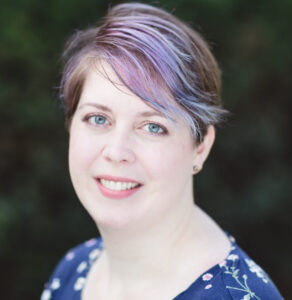
Every Day a Doorway
One of my favorite genres of fantasy fiction is the “magical door” story – tales where a person finds a mystical, strange doorway into another world. Alice in Wonderland is probably the best-known example, but I’m more fond of the contemporary takes, especially Seanan McGuire’s Every Heart a Doorway (2016) and the Wayward Children series that follows it. In McGuire’s books, children disappear into doorways that lead them to worlds where they feel profoundly at home – sometimes pretty ones, like a world where everything is made of candy, but just as often menacing worlds where lightning can raise people from the dead or where they fight alongside merpeople against the Eldritch horrors of the deep. Besides being the ultimate escapist fantasy for anybody who felt wildly ill-at-ease and out of place in their adolescent years (everybody, perhaps?), these stories also convey that we aren’t really looking for a docile, perfect place to be – we just want to be where we know we fit.
This magical door framework recently snuck up on me during an exercise on teaching – we were asked to artistically represent our teaching selves, or the “bother” that spurs us on as professors. Without realizing the connection to some of my favorite books, I quickly crocheted some drab ribbons into a doorway – and on the other side of that doorway, I painted wild and colorful movement, represented in glitter and pom poms and sticky foam. This is how I see my teaching in theology – trying to coax students through a doorway into a world that is bright and overwhelming, chaotic but lovely.
Looking at my hasty picture afterwards, I found myself realizing again why students can be so hesitant to jump into this wild world. The doorposts are pretty, in their own way, and they certainly are familiar. We all cling to groundedness when we’re uncertain, and higher education is constantly uncertain, with students suddenly struggling with topics they once found simple, oscillating between the career plans they expected and the ones that better fit their skills, fretting at each new professor’s style of teaching and grading. While my students as a group aren’t particularly religious, for some, their fundamental beliefs about God or the universe or that everything happens for a reason are one of the few stable parts of their identity. My theology class threatens to shake up even that. So, at least on the tough days, they cling to the doorposts and lintels like a toddler avoiding a bath, grasping onto anything rooted until the danger has passed. Or, maybe just as often, they go quiet and inward, not wanting to step through the portal into a conversation they feel unprepared for. Questions and options seem to help – “Do you want to get into groups now, or should we do a poll first?” “I know we might not know much about vows of silence, but who in here needs complete quiet to do homework?” I get them talking about themselves first, and our content second. That way, they can peek through the windows before deciding whether to come outside, and that first tiny step might be enough to build momentum.
It’s a helpful reminder that my students are always doing hard work to engage with me and the readings I assign – almost any class day brings up questions. “Do I believe this?” “Could I live that way?” “What commitments would I die for?” “What commitments will I live for?” Even for the non-religious, theology class always holds the potential for deep introspection alongside factual learning, and introspection is hard.
With my doorway image in mind, I can recall the importance of gentleness and compassion in my role – not easy-ness, but a gentleness that reminds me to notice the uncertainty, even fear behind the disengagement, and to be ready to try again and again to connect with each individual. I can see more clearly how chaotic and overwhelming the field seems, especially to those who have never crossed the threshold, and look for ways to reassure them that there is something familiar and good on the other side, and that I’ll accompany them until they find it. I remember well a young Latina student pulling me aside after the last day of class and whispering to me, almost like a secret, “Until this class, I didn’t realize I could be both Catholic and a feminist!” She had found her place to belong in the mess of it all. It helps me remember how badly we all want to find a place where we feel welcome, and to create that with both my affect and my syllabus. Every day is a doorway in theology class, and my role is to stand behind it, beckoning, and reassuring, “It’s wonderful here. All you have to do is take another step.”
Leave a Reply